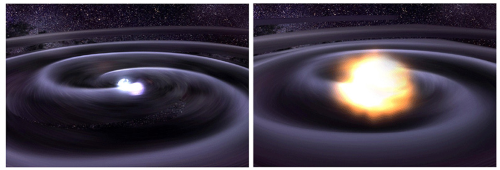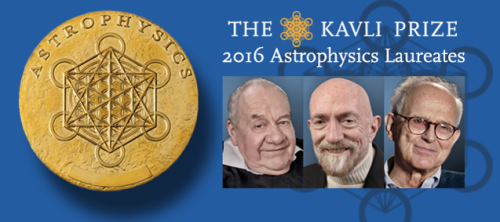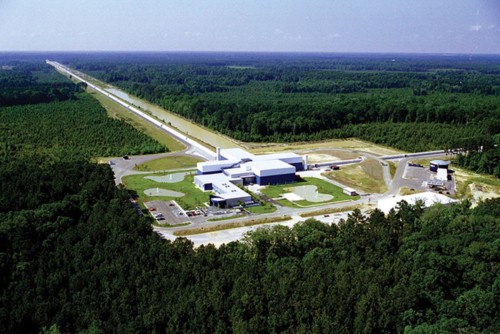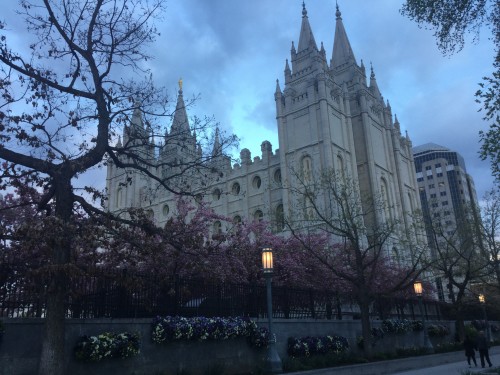Tag archives: LIGO
Chasing gravitational waves in song, physicists on Broadway, the ‘impossible space engine’ returns
By Hamish Johnston
These days anyone making a major breakthrough in physics is expected to follow-up with a cheesy music video. So give it up for The Mavericks and “Chasing the Waves”, which chronicles the quest to detect gravitational waves – which culminated in LIGO’s success earlier this year. I don’t much about this video, but it seems to have been filmed at the University of Glasgow, which is part of the LIGO collaboration.
View all posts by this author | View this author's profile
Second wave: all about LIGO, black holes, gravitational ripples and more
By Tushna Commissariat
What an exciting week it has been, as the LIGO and Virgo collaborations announced that they have definitely detected a second gravitational wave event using the Advanced Laser Interferometer Gravitational-wave Observatory (aLIGO) in the US. These waves made their way into aLIGO early on Boxing Day last year (in fact it was still very late on Christmas Day in the US states where the twin detectors are located), a mere three months after the first gravitational-wave event was detected on 14 September 2015.
This event once again involved the collision and merger of two stellar-mass black holes, and since the “Boxing Day binary” is still on my mind, this week’s Red Folder is a collection of all the lovely images, videos, infographics and learning tools that have emerged since Wednesday.
LIGO physicist and comic artist Nutsinee Kijbunchoo has drawn a cartoon showing that while the researchers were excited about the swift second wave, they were a bit spoilt by the first, which was loud and clear – and could be seen by naked eye in the data. The black holes involved in the latest wave were smaller and a bit further away, meaning the signal was fainter, but actually lasted for longer in the detectors.
View all posts by this author | View this author's profile
LIGO paints a clearer picture of its merging black holes

Illustration of two black holes spiralling into each other to create a larger black hole. (Courtesy: Caltech/MIT/LIGO Lab)
By Hamish Johnston
Physicists working on the LIGO gravitational-wave detectors have released more information about the merging black holes that they announced the discovery of earlier this year. Dubbed GW150914, we now know that the gravitational wave was created by the merger of one black hole that was 36 times as massive as the Sun with a smaller black hole that weighed in at 29 solar masses. The result of the merger was a black hole at 62 solar masses and a spin angular momentum of 0.67, where 1.0 is the maximum value of spin a black hole can have.
View all posts by this author | View this author's profile
Kavli prize for gravitational-wave pioneers

Gravitational-wave pioneers: (l to r) Ronald Drever, Kip Thorne and Rainer Weiss.
By Michael Banks
It’s been a great month for the people behind the Advanced Laser Interferometer Gravitational-wave Observatory (aLIGO), which recently discovered gravitational waves.
In early May, Ron Drever, Kip Thorne and Rainer Weiss – who co-founded LIGO – together bagged a cool $1m share of a special $3m Breakthrough Prize together with more than 1000 LIGO scientists, who shared the remaining $2m.
View all posts by this author | View this author's profile
LIGO could soon detect one gravitational wave per week

The LIGO detectors in Louisiana (above) and Washington are currently being upgraded. (Courtesy: LIGO/Caltech)
By Hamish Johnston at the APS April Meeting in Salt Lake City
I came to Salt Lake City hoping to glean a few golden nuggets of information about what future gravitational-wave detections we can expect from LIGO. What I found is that the collaboration is as tight-lipped as ever about discussing potential results. That’s fair enough and I understand the caution. However, I was hoping that the researchers would have loosened up a bit after their February announcement of the first gravitational-wave detection and share a little more with the general public.
So, what have I learned?
Merging black holes come to Salt Lake City

The Mormon Temple in Salt Lake City.
By Hamish Johnston at the APS April Meeting in Salt Lake City
Will the LIGO collaboration announce today that it has detected more gravitational waves? There is a session this morning at 10.45 a.m. at the APS April Meeting with the enticing name “Results from Advanced LIGO“, and I think it’s safe to say that you should get there early if you want to get a seat.
In February the LIGO announced the first ever detection of a gravitational wave, which was made while the collaboration’s two detectors were being calibrated. Now that the experiment has been running since September 2015, it will be interesting to see if the first detection was a rare event that they were lucky to see, or if LIGO will be detecting the mergers of black-hole pairs on a regular basis.
Stay tuned to for updates, and in the meantime enjoy this photograph I took of the Mormon Temple, which is across the road from the convention centre here in Salt Lake City.
Lilting to the LIGO tune, Fukushima five years on and more
By Tushna Commissariat
Looks as if LIGO’s gravitational-wave discovery is still rocking all over the world, as you can now groove to the dulcet tones of singer and physicist Tim Blais, who runs the acapellascience channel on YouTube. With some help from the Perimeter Institute in Canada, the singer has created his latest “nerd-pop” parody, titled “LIGO Feel That Space” (sung to the tune of The Weeknd’s “Can’t Feel My Face”). After you listen to the catchy tune above, take a look at this interview with Blais on the Perimeter website to find out just how he creates his songs and how he went from physicist to a viral YouTuber.
Physics versus superheroes, a cosmic landscape and a dress inspired by LIGO

Galactic views: the Scottish countryside stretches out beyond the Milky Way. (Courtesy: Crawick Multiverse)
By Hamish Johnston
What to do with an abandoned mine? “Turn it into a neutrino and dark-matter detector” is probably what most physicists would say. But we have lots of those already, so how about “A cosmic landscape worthy of the ancients”? That’s how the artist Charles Jencks describes the Crawick Multiverse, which is located in a former open-cast coal mine in the Scottish countryside about 50 miles south of Glasgow. The “striking landscape of distinctive landforms” includes two mounds representing the Andromeda and Milky Way galaxies and a Comet Walk that uses standing stones to emulate a comet’s tail. If the photograh above is any indication, it looks like a lovely day out.
Waves of soup, spying on gravity and touring the solar system

Nathan Myhrvold’s gravity-inspired soup bowl. (Courtesy: Modernist Cuisine)
By Hamish Johnston
Nathan Myhrvold knows a lot about gravity (he worked with Stephen Hawking) and a lot about food (he wrote Modernist Cuisine) so it’s not really surprising that he has designed a soup bowl inspired by the collision of two black holes. Created in 2014, the bowl was made to hold two different types of soup in swirls of space–time. Now that the LIGO observatory has spotted a gravitational wave from the collision of two such black holes, I’m guessing sales of the bowl will be out of this world.
View all posts by this author | View this author's profile
Surfing the LIGO wave, sounding out black holes and more
By Matin Durrani and Tushna Commissariat
Unless you are completely disconnected from all electronic media, the Internet and don’t read a newspaper, by now you must have heard that the LIGO Virgo collaboration has made the first ever detection of gravitational waves, spewed out by two black holes merging into one. The story made waves across the world, if you will excuse the pun, and seemed to capture the interest of scientists and the public alike. Above you can listen to the chirp of the merger event, dubbed GW150914, that occurred 1.3 billion years ago, when multicellular life was just emerging on Earth. Indeed, these sounds are so intriguing that they are being turned into musical compositions.